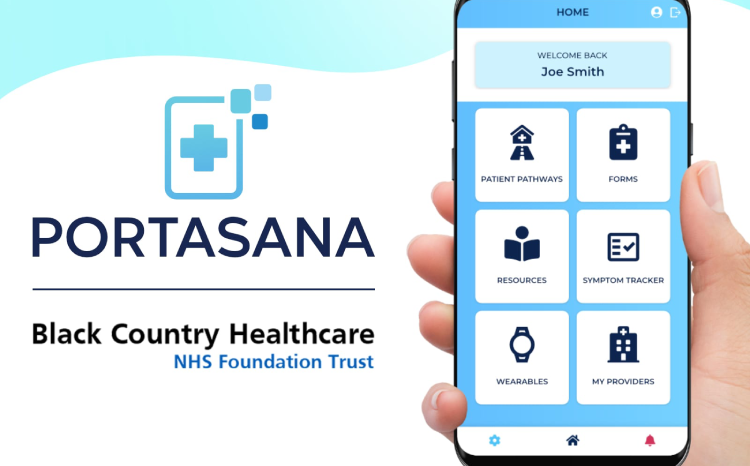E-Health Insider – the first 100 issues
- 20 November 2003
As the E-Health Insider newsletter celebrates the 100th edition, we take the opportunity to look back over highlights of two years coverage of e-health.
December 2001 – Tablets within two years
In EHI No 1 we reported on a Microsoft-Department of Health conference at which Bill Gates and Alan Milburn set out the vital role of IT in NHS modernisation. Milburn announced £85m extra for NHS IT in 2002-2003 and a Microsoft-led cancer EPR project called ‘Lightbulb’ was expected to be given the green light.
Showing just how dangerous predictions can be Gates told the audience of NHS chief executives that Tablet PCs would become commonplace in health within two years.
In EHI No 5, the NHS Modernisation Agency was predicting the April 2002 target for 25% of acute trusts to have a level 3 EPR in place would be missed.
March 2002 – PM takes personal interest in health IT
EHI broke the news that a new approach to NHS IT was being planned. EHI no 11 saw us report that Sir John Pattison, the Department of Health’s director of research, development and information, had met with the Prime Minister.
Later that month we revealed that a new approach to EPR was being planned and that the Information Policy Unit finally acknowledged the original IfH targets would not be met (EHI No 13). At Healthcare Computing 2002 in Harrogate, Sir John Pattison’s announcement of a new national programme, based on infrastructure, electronic records, booked admissions and e-prescribing (EHI No 14).
April 2002 – Wanless calls for doubling of NHS IT investment
A further key announcement came in April, 2002 (EHI No 18) with the Wanless Review into NHS funding, which called for a doubling of investment in NHS IT.
May 2002 – Lightbulb turned off
The plug was pulled on Lightbulb, after the DH failed to secure funding for development projects to demonstrate how the latest generation of information technology could be applied to the NHS (EHI No 21).
May 2002 – ‘Delivering 21st Century IT Support’
We got a first glimpse of the shape of things to come when we broke the news about the contents of a new strategy ‘Delivering 21st Century IT Support for the NHS’ (EHI No 24. As we reported: “The programme set out represents probably the most complex IT project ever to be undertaken in the UK.”
July 2002 – National strategy cleared by OGC
Later developments on the as yet unpublished national strategy, included the news that Prime Service Providers – as we then knew Local Service Providers – would probably be firms from outside health. We reported that the strategy had got the green light – but only barely – from the initial Office of Government Commerce Gateway Review (EHI No 30).
August 2002 – Meet Integrated Care Records Services
EHI No 34 introduced readers to Integrated Care Records Services (ICRS), with detailed reports on the ICRS consultation document and draft procurement framework for what was now being called the ‘Programme’. The tight timetable called for implementation to begin by November 2003.
September 2002 – Richard Granger appointed NHS Director-General, NHS IT
Like the vast majority of EHI readers, we’d never heard of Richard Granger until the autumn of 2002 (EHI No 39). His title of director-general of NHS IT may have sounded like one from a Gilbert and Sullivan operetta but the man himself has been a revelation and rarely out of our news reports since.
October 2002 – EDS Awarded NHSmail Contract
The award of a £91m contract to provide all NHS staff with secure web-based email was covered in EHI No 42. In the same month a survey showed that just 33% of NHS staff thought themselves to be competent with IT.
November 2002 – EHI reaches 50
EHI celebrated its 50th issue by announcing it had reached the milestone of over 4,000 readers having signed up for the weekly newsletter.
December 2002 – Granger lays down law to suppliers
In the last issue of the year (EHI No 51) we reported that Granger had put suppliers on notice they must deliver results. Setting a pattern that would become familiar, we reported that he had warned suppliers they briefed against him at their peril: “…suppliers were told that rocking the boat or publicly questioning the national programme will result in them being cast into the abyss – excluded from doing business with the NHS for ten years.”
Rumours reached us that EHI had endeared itself to the director-general with a festive ‘Christmas Wish List’ competition.
January 2003 – Granger confirms IT spend at £2.3bn
The year began with the news that contracts had been awarded to ASE Consulting and Xansa to establish a new ‘design authority’ for the National Programme. A separate ‘Project Support Office’ contract was awarded WS Atkins (EHI No 51).
Later the same month, in his first press interview, the director-general had confirmed that the extra investment in NHS IT would be £2.3 million over three years (EHI No. 57). EHI made its first request for an interview with Granger.
February 2003 – Procurement details published
Procurement guidance for the national programme was released (EHI No 59) – and it was goodbye PSPs, welcome LSPs The month also saw the publication of the OJEC advert for firms bidding to deliver the programme.
March 2003 – National Programme at 12-months old
March also saw the first anniversary of what by now had become the National Programme for IT (NPfIT). Key official messages from Healthcare Computing 2003 included: there would be five LSPs; communications had been neglected but were about to improve (this was to became a familiar theme for the year); and whatever people thought there was no local planning blight (EHI No 65).
April 2003 – EHI readers worry about lack of clinician involvement
EHI asked readers to respond to the director-general’s call for views on the national programme, the most common theme that EHI readers came back with was concern about the lack of clinician involvement and secrecy of the programme – concerns that were to become familiar (EHI No 68).
April also saw the publication of a long-list of 31 firms and consortia who had won through the first stage of tendering to be LSPs or NASPs for the NPfIT (EHI No 69).
May 2003 – A little light reading for bidders
By May the list had been whittled down to 22 bidders who were issued with the weighty Output Based Specification (OBS) for ICRS. Later that month EHI reported that plans for electronic social care records had been pushed back (EHI No 73).
The same month saw the long running South West Shires collaborative procurement ended.
June 2003 – Trusts still struggling to protect IT funds
EHI reported that trusts were still being forced to raid local IT funds to meet service pressures, a problem that remains in search of a solution (EHI No 76).
At the British Computer Society’s Primary Care Special Interest Group Conference it became clear that efforts to keep the OBS documents confidential weren’t working (EHI News). A forest of hands shot up when the director-general asked who had seen the secret spec.
We have fondish memories of the time when the hacks outnumbered managers at IT sessions held during the NHS Confederation’s annual conference – you could get a seat at least, but those days are over. The director-general’s presentation was standing room only.
July 2003 – Another regional procurement bites the dust
EHI broke the news that Thames Valley had become the latest collaborative EPR procurement to be ended (EHI No 80). We also revealed that the three electronic transfer of prescription (ETP) pilots were to be axed.
Later in July EHI ran a series of investigative reports questioning whether the NHSIA would ever see any of the royalty fees originally anticipated from its substantial investment in SNOMED CT (EHI No 81). We understand the IA has since set up a group to re-examine the contract.
At the end of the month, ASSIST published a survey listing members’ worries about the NPfIT. “Top concerns include a perception that the funding may be insufficient, lack of guidance about National Programme priorities and fears about staff transfers out of the NHS.”
August 2003 – The final LSP short-list
EHI exclusively published an unofficial short-list of firms that had been short-listed as LSPs (EHI No 85). A few weeks later EHI broke the news that there would be no national funding of local projects beyond the current financial year (EHI No 88), and was subsequently the first to report Lockheed-Martin had bowed out of the NPfIT.
By the end of August EHI’s registered users had passed 6,000 individuals. However, our ongoing efforts to get an interview with anyone from the NPfIT continued to prove fruitless…
September 2003 – Winners and losers in e-booking emerge
September began with the news that EDS had been dropped from the e-booking contract. EHI predicted that the contract would be awarded to Schlumberger-Sema (EHI No 91. Later in the month, IDX and Logica won a £70m EPR contract from UCLH.
October 2003 – New interactive E-Health Insider launched
Seven months after they were first promised, and 19 months after the NPfIT was first launched, new patient and clinician advisory groups were formed (EHI No 93).
October was a red letter month, too, for EHI. After extensive development and feedback from readers EHI was relaunched with a new website and interactive comment and forum tools and so far your response has been extremely positive.
2004 and beyond…
With the first two LSP contracts due to be awarded next week, and the remaining contracts due by the end of 2003 the opening chapters of the NPfIT are set to close. After providing exhaustive coverage of the opening phases we particularly look forward to covering the hard work of implementation and delivering benefits to staff and patients.
Our sincere thanks to all EHI readers who have provided their support, enthusiasm and feedback over the first 100 issues – it really is invaluable. We look forward to continuing to report on all aspects of health IT and e-health and will continue to pursue an interview with the elusive Mr Granger in 2004…




